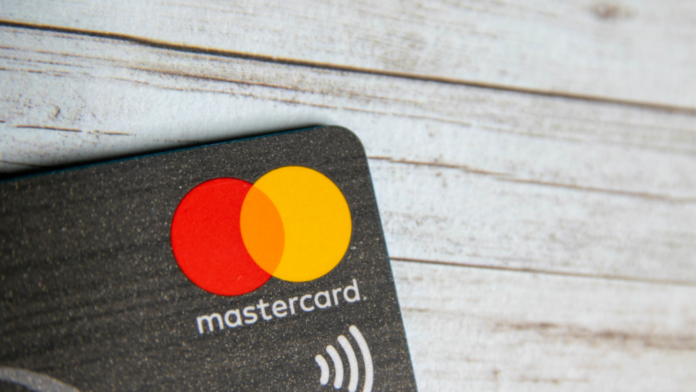
Picture this: a world where digital currencies are seamlessly integrated with artful blockchain innovations like Non-Fungible Tokens (NFTs). Sounds futuristic, right? Yet, that’s precisely what Mastercard has been up to.
Recently, Mastercard wrapped up a groundbreaking trial, illustrating how central bank digital currencies (CBDCs) can be “wrapped” and employed to acquire NFTs on prominent blockchains, including Ethereum. If you’re drawing parallels with wrapped Bitcoin (wBTC) or wrapped Ether (wETH), you’re on the right track.
Diving deeper, this intriguing experiment was orchestrated in collaboration with the Reserve Bank of Australia (RBA) and the Australian Digital Finance Cooperative Research Centre CBDC. Companies like Cuscal and Mintable also joined the foray. During the trial, a CBDC owner could seamlessly buy an NFT listed on Ethereum. So, how did this all play out?
First, the necessary amount of the pilot CBDC was “locked in” on the RBA’s dedicated platform. Then, a matching amount of wrapped pilot CBDC tokens sprang to life on Ethereum. Quite the magic trick, if you ask me!
Ensuring a secure transaction, both the buyer’s and seller’s Ethereum wallets, along with the NFT marketplace’s smart contract, had to be pre-approved or “allow-listed.” Thanks to this step, the transfer of the wrapped pilot CBDC was tightly controlled, effectively spotlighting the platform’s ability to maintain rigorous controls even on public blockchains.
This venture leans heavily on Mastercard’s Multi-Token Network, a platform rolled out in June 2023. This network ingeniously melds payment tech with the blockchain world. Reflecting on this, Zack Burcks, the brain behind Mintable, remarked, “In collaboration with Mastercard, we’ve pinpointed a scenario where digital currencies and NFTs can effortlessly intertwine. This could be the antidote to fraud, document loss, and may very well unlock new commerce horizons.”
While this experiment beams with promise, the RBA strikes a cautious note. They’ve previously articulated that an Australian dollar CBDC could usher in intricate payment modalities and potentially rejuvenate the finance sector in ways that traditional fiat money just can’t. But they’re holding their cards close, emphasizing the need for more in-depth research to truly grasp the potential perks.
In essence, Mastercard’s exploration into wrapped CBDCs offers a tantalizing glimpse into the future of finance. As the boundaries between traditional banking and blockchain blur, it’s ventures like these that pave the way for a revolutionary financial landscape.
- SEO Powered Content & PR Distribution. Get Amplified Today.
- PlatoData.Network Vertical Generative Ai. Empower Yourself. Access Here.
- PlatoAiStream. Web3 Intelligence. Knowledge Amplified. Access Here.
- PlatoESG. Carbon, CleanTech, Energy, Environment, Solar, Waste Management. Access Here.
- PlatoHealth. Biotech and Clinical Trials Intelligence. Access Here.
- Source: https://cryptocoin.news/news/mastercards-wrapped-cbdcs-glimpsing-future-finance-94396/?utm_source=rss&utm_medium=rss&utm_campaign=mastercards-wrapped-cbdcs-glimpsing-future-finance
- :has
- :where
- $UP
- 2023
- a
- ability
- acquire
- All
- along
- also
- amount
- an
- and
- Antidote
- ARE
- AS
- ask
- Australia
- Australian
- Australian dollar
- Bank
- Banking
- BE
- been
- behind
- between
- Bitcoin
- blockchain
- blockchains
- blur
- both
- boundaries
- Brain
- but
- buy
- CAN
- Cards
- cautious
- CBDC
- CBDCs
- central
- Central Bank
- central bank digital currencies
- CENTRAL BANK DIGITAL CURRENCIES (CBDCS)
- centre
- Close
- collaboration
- Commerce
- Companies
- contract
- controlled
- controls
- cooperative
- could
- currencies
- dedicated
- deeper
- DID
- digital
- digital currencies
- Digital Finance
- document
- Dollar
- drawing
- during
- effectively
- effortlessly
- emphasizing
- employed
- essence
- Ether
- ethereum
- ethereum wallets
- Even
- experiment
- exploration
- Fiat
- Fiat Money
- finance
- financial
- For
- Foray
- fraud
- future
- futuristic
- Glimpse
- grasp
- groundbreaking
- had
- heavily
- holding
- Horizons
- How
- HTTPS
- if
- illustrating
- in
- in-depth
- Including
- innovations
- integrated
- into
- intriguing
- joined
- june
- just
- landscape
- Life
- like
- Listed
- loss
- magic
- maintain
- mastercard
- matching
- max-width
- May..
- money
- more
- necessary
- Need
- network
- New
- NFT
- NFTs
- non-fungible
- non-fungible tokens
- NON-FUNGIBLE TOKENS (NFTS)
- of
- Offers
- on
- or
- orchestrated
- out
- owner
- Parallels
- pave
- payment
- perks
- pilot
- platform
- Platforms
- plato
- Plato Data Intelligence
- PlatoData
- Play
- potential
- potentially
- precisely
- previously
- prominent
- promise
- public
- quite
- RBA
- reflecting
- remarked
- research
- Reserve
- reserve bank
- reserve bank of australia
- Reserve Bank of Australia (RBA)
- revolutionary
- right
- rigorous
- Rolled
- s
- scenario
- seamlessly
- sector
- secure
- smart
- smart contract
- So
- Step
- Strikes
- tantalizing
- tech
- Thanks
- that
- The
- The Future
- their
- then
- These
- this
- tightly
- to
- Tokens
- track
- traditional
- traditional banking
- transaction
- transfer
- trial
- truly
- unlock
- venture
- Ventures
- very
- Wallets
- was
- Way..
- ways
- wBTC
- WELL
- wETH
- What
- with
- world
- Wrapped
- Wrapped bitcoin
- Wrapped Bitcoin (wBTC)
- yet
- You
- zephyrnet












